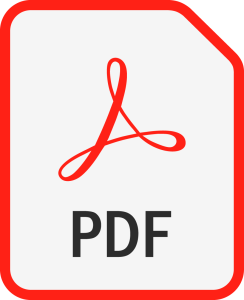Appendix 3: PDF Accessibility

In addition to adhering to best practices for plain language, font, colour, and other accessibility essentials for technology-enabled learning, an accessible PDF is tagged. PDF tags are code that providea structure for assistive technology.
PDFs can be generated in software such as Adobe Acrobat, but the most common method is to take an existing Word document or PowerPoint presentation and export it to PDF. Exporting to PDF will be a seamless process for many documents with little additional work required. Ensure that you start with an accessible document before exporting to PDF. You may find it helpful to share accessible, read-only versions of your document instead of, or in addition to, a PDF copy.
 Something to Consider
Something to Consider
The best way to use PDFs is sparingly. PDFs are, in some ways, an antiquated format that is extremely time-consuming to make fully accessible, especially by the average user. The benefit of using PDF is its portability, which means that most users can open PDF files regardless of the operating system or device they are using. However, it’s a common misconception that PDF files in and of themselves are inherently accessible. For a PDF to be fully accessible, the contents must be designed with accessibility in mind.
In some cases, complex Word documents with varied design features or layouts can rarely be made fully accessible. Creating simple, clear Word documents for teaching and learning before converting to PDF is essential to achieve accessibility for all users. As educators, it is better to sacrifice style for universal understanding and access.
A tagged PDF includes semantic information and structure to create an accessible document. This is done by adding tags to the document in Adobe Acrobat.

